|
Dear Friend,
After an active week in Washington, I’m here with an update for you on our work on behalf of eastern Connecticut. Thanks for taking a little time to catch up, and for starting your weekend here with us.
New Maintenance Work on the USS Hartford at Electric Boat
Great news for our U.S. Navy, and for eastern CT's shipbuilders and economy. Last night, the Navy officially awarded a new contract for the men and women of Electric Boat (EB) to complete the maintenance upgrade and overhaul of the USS Hartford (SSN 768), one of America’s LA-class submarines. This major contract award represents the completion of one of the largest maintenance availabilities in EB’s entire history, and it comes at the same time as production of the first-ever Columbia-class submarine has also just begun. Most importantly, this repair work will stabilize the shipyard workforce, which in the past has struggled with ebbs and flows of work orders. The Seapower Subcommittee, which I chair, authorized this contract in the 2022 defense bill – at the time a very high priority for EB management and labor.
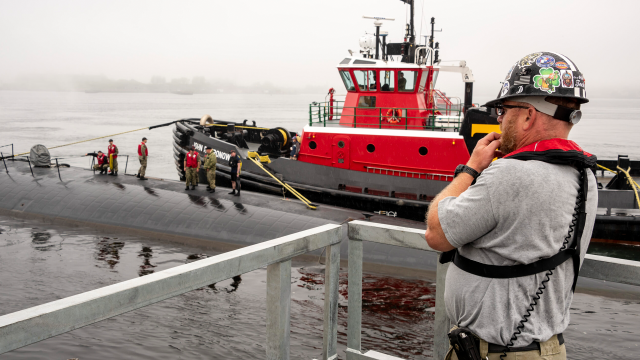 |
| Above, the USS Hartford is pictured arriving at Groton after Rep. Courtney's office announced the initial "Smart Start" contract award for EB to begin maintenance on the sub in the Spring of 2021 |
When the USS Hartford was first sidelined for maintenance in 2021, preliminary work was done by our region's shipbuilders in Groton under a preliminary “Smart Start” contract award, which allowed them to get an early start on the project. The Seapower Subcommittee also authorized the funding for that innovative “Smart Start” approach, and our shipbuilders took advantage. Their success on that initial maintenance led directly to today’s nearly $700 million contract award, which was also authorized by our Subcommittee, and that’s going to fuel activity at the Groton shipyard and throughout our larger manufacturing sector for years to come. This is another strong endorsement by the Navy in the talent and enduring importance of our shipbuilders and manufacturers in eastern Connecticut, and in the critical role they’ll continue to play. Learn more about USS Hartford and this new contract here.
A Bill to Support Young Farmers
Farmers grow our food, they’re excellent stewards of our land, and they support lots of jobs in rural communities. They provide a true public service, and we need to focus on supporting the next generation of America’s farmers and ranchers. That’s why this week, I introduced the bipartisan Young Farmer Success Act, which would make full-time farmers eligible for student debt forgiveness through the Public Service Loan Forgiveness (PSLF) program. This commonsense update to PSLF would help provide an incentive for young people to enter the farming and agriculture industry at a time when the average age of US farmers is 59 years old. We’ve got to bring young people back to the farm and ranch, and support new farmers so they can stay in the industry.
These things should be a national priority, and I’m proud to say that the Young Farmer Success Act is a bipartisan bill.
 |
| The bipartisan Young Farmer Success Act would help America’s beginning farmers save money at a crucial time as they begin their businesses. Read more here. |
I introduced the Young Farmer Success Act after working with local farmers here in eastern Connecticut, particularly Susan Mitchell, Founder and Owner of Cloverleigh Farm in Columbia—she’s been the driving force behind this effort, and we’ve been glad to welcome on support from groups like the nationwide Young Farmer Coalition. There are lots of challenges new farmers face when trying to start their own businesses, and many of them stem from high costs—the cost to acquire land, to invest in farm equipment, and more. By making farmers eligible for the newly overhauled PSLF program, the Young Farmer Success Act would help give America’s new farmers a fighting chance to build a life on the farm for themselves and their families.
75 Years of Manufacturing for the Navy
Manufacturers in every corner of CT-02 play important roles in submarine manufacturing for our Navy—from the Quiet Corner, to North Central CT, and along the shoreline. This week, I stopped by L.C. Doane, a woman-owned manufacturing business in the Ivoryton section of Essex. They’ve been a major supplier for the Navy since 1947, and in that time they’ve grown to 100 employees and a 150,000 square foot facility. L.C. Doane produces components like lighting fixtures that can be found on many Navy ships currently at-sea – including on Virginia-class submarines – and they’ve already shipped general lighting they manufactured for the new Columbia-class submarines.
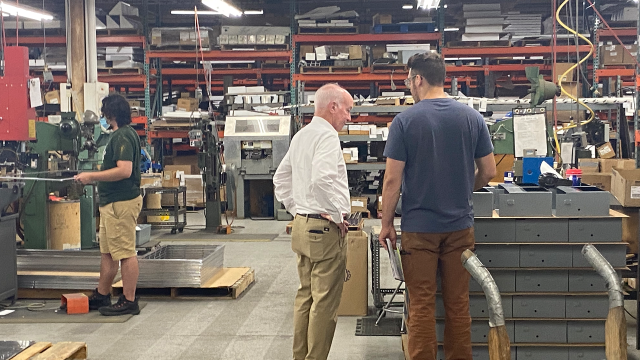 |
| L.C. Doane has been a Navy supplier for 75 years, they’ve grown to over 100 employees and a 150,000 square foot facility |
With continued production of VA-class submarines and construction on the first of the Columbia fleet now underway, our region is taking on a massive challenge in manufacturing and workforce development. I’ve overseen the uptick in U.S. submarine production as Chairman of the Seapower and Projection Forces Subcommittee, and I’ve worked in bipartisan fashion to make sure we’re ready to meet the challenge and opportunities it presents through workforce skills training efforts like our Manufacturing Pipeline Initiative, and in our annual defense budgets. For example, in the House’s NDAA this year, we secured $227 million specifically to support workforce development efforts throughout the submarine production pipeline. With so much shipbuilding demand on the horizon, manufacturers like L.C. Doane will continue to rely on a skilled workforce to meet the needs of their growing businesses, and I’ll remain focused on our bipartisan work in Congress that helps deliver it for them.
Big thanks to President Bill Psillos and the entire team at L.C. Doane for showing me around!
Final Passage of a Landmark Bill for American Innovation
This week, the House voted to pass the CHIPS & Science Act – a bipartisan bill to boost American competitiveness, grow our STEM and manufacturing workforce, and lower costs for the long-haul. The pandemic exposed some serious vulnerabilities in America’s supply chains, and there’s no better example of that than the worldwide shortage of semiconductor chips. “Microchips” are essential components in all sorts of products – from cars, cell phones, and appliances, to defense technology – and the global shortage disrupted American manufacturing, slowed down production, and played a huge role in raising prices in several industries. For our own economic and national security, we can’t keep relying on foreign competitors to supply us with these crucial components—we need to make them ourselves. The Chips & Science Act lays the groundwork to bring back domestic production of semiconductor chips, and it’s now going to be signed into law.
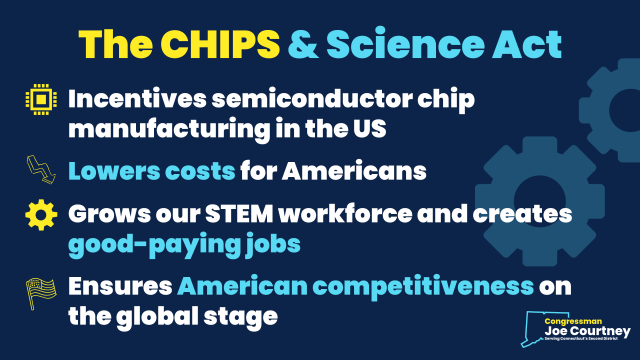
Semiconductor chips have become critical to economic and national security. While foreign competitors have been investing heavily to dominate this industry, domestic production of microchips has dropped off dramatically from 37% in the 1990’s, to only 12% today. Other nations have also begun to outpace the United States’ research advantage, threatening our leadership in technology and scientific innovation. This bill will help ensure we remain competitive on the global stage for decades to come. Proud to support its passage in the House and send it to the President’s desk to be signed into law.
We’ve heard it for months now, but if there’s one entity that was rooting hard against our ability to re-invest in domestic microchip production, it was China. If you want to understand how critical this bipartisan vote was, just listen to my colleague Rep. Meijer (R-MI). We got this bill done on a bipartisan basis, and I wholeheartedly agree with his take.
What Has the American Rescue Plan Meant for Essex?
Our towns were all impacted by the pandemic, and many lost critical revenues when businesses closed or slowed down. In Essex, the high volume of COVID-related emergency calls stretched their response services thin—their emergency vehicles were worn down with heavy use, and they needed to make upgrades. Thanks to the nearly $2 million in American Rescue Plan funding Essex received, the town was able to purchase a new ambulance, fire rescue vehicle, and police cruiser. Take a look below.
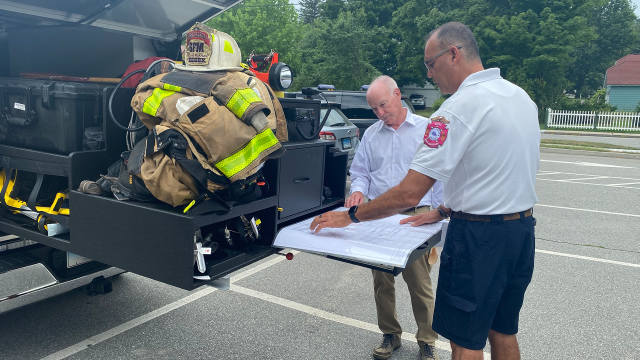
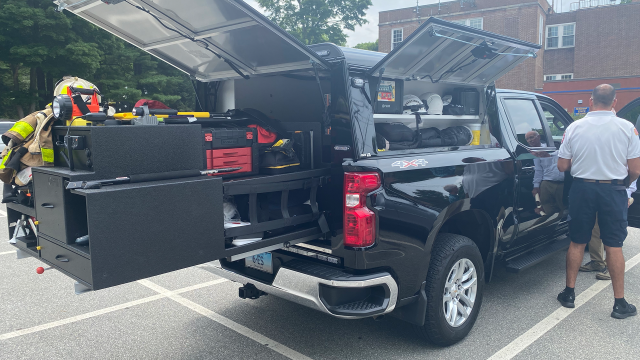 |
| The town of Essex used American Rescue Plan funding to purchase a new Fire Rescue Vehicle, which allows for easy access to all sorts of lifesaving devices—from self-contained breathing apparatuses, to their new emergency “KnoxBox” system, which was also purchased using Rescue Plan funding. The KnoxBox system is helpful during emergency situations where firefighters know that someone is stranded and in need of help inside of their home—with the permission of homeowners, it can help firefighters reach people in need without busting down doors or otherwise damaging a home. |
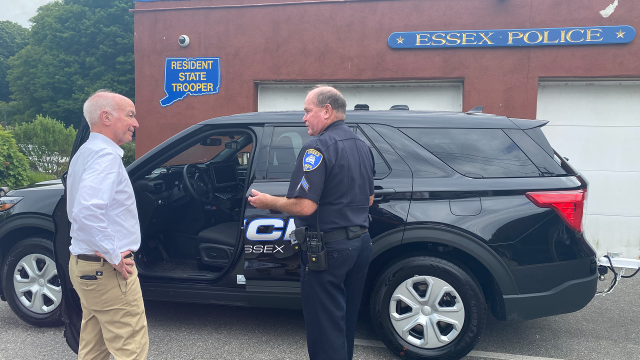 |
Thanks to the American Rescue Plan, the Essex Police Department
was able to purchase a much-needed new police cruiser. |
 |
| Using funding from the American Rescue Plan, the Town of Essex is making much-need communications upgrades to its Town Hall by installing a new weather-resistant antenna. It might not be the splashiest investment, but it’s important—the current communications system has gotten flimsy with age, and a strong storm could render the town’s emergency communications services useless. The new antenna will be a lot stronger, and will enable the town to keep important emergency communications online during intense storms and severe weather. |
If it weren’t for support through the American Rescue Plan, towns like Essex wouldn’t have been able to move forward with important projects like these. I’ve been making stops in towns across the Second District to hear how they’ve used this direct support, and I’ll be back with more updates soon.
Thanks as always for starting your weekend here with me. If you we can be of any assistance, don't hesitate to give my Norwich Office a call at (860) 886-0139. Have a great weekend!
Sincerely,

Joe Courtney
Member of Congress
|